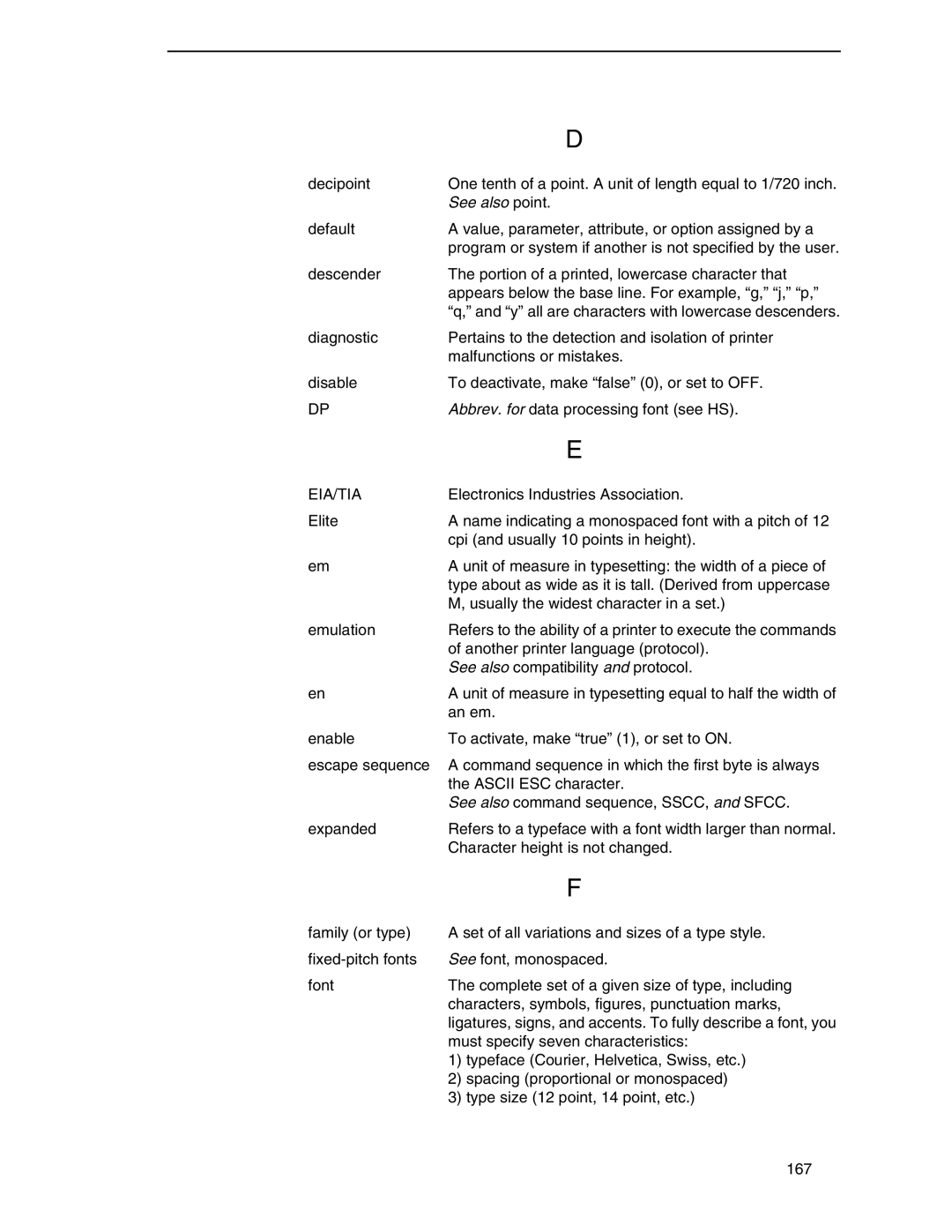| D |
decipoint | One tenth of a point. A unit of length equal to 1/720 inch. |
| See also point. |
default | A value, parameter, attribute, or option assigned by a |
| program or system if another is not specified by the user. |
descender | The portion of a printed, lowercase character that |
| appears below the base line. For example, “g,” “j,” “p,” |
| “q,” and “y” all are characters with lowercase descenders. |
diagnostic | Pertains to the detection and isolation of printer |
| malfunctions or mistakes. |
disable | To deactivate, make “false” (0), or set to OFF. |
DP | Abbrev. for data processing font (see HS). |
| E |
EIA/TIA | Electronics Industries Association. |
Elite | A name indicating a monospaced font with a pitch of 12 |
| cpi (and usually 10 points in height). |
em | A unit of measure in typesetting: the width of a piece of |
| type about as wide as it is tall. (Derived from uppercase |
| M, usually the widest character in a set.) |
emulation | Refers to the ability of a printer to execute the commands |
| of another printer language (protocol). |
| See also compatibility and protocol. |
en | A unit of measure in typesetting equal to half the width of |
| an em. |
enable | To activate, make “true” (1), or set to ON. |
escape sequence | A command sequence in which the first byte is always |
| the ASCII ESC character. |
| See also command sequence, SSCC, and SFCC. |
expanded | Refers to a typeface with a font width larger than normal. |
| Character height is not changed. |
| F |
family (or type) | A set of all variations and sizes of a type style. |
See font, monospaced. | |
font | The complete set of a given size of type, including |
| characters, symbols, figures, punctuation marks, |
| ligatures, signs, and accents. To fully describe a font, you |
| must specify seven characteristics: |
| 1) typeface (Courier, Helvetica, Swiss, etc.) |
| 2) spacing (proportional or monospaced) |
| 3) type size (12 point, 14 point, etc.) |
167
